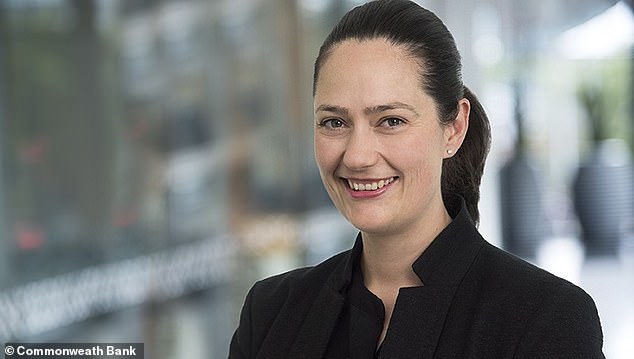How record immigration has kept your wages low, fueled inflation and pushed up house prices
Australia's largest bank says record high immigration has suppressed wages, fueled inflation and pushed up house prices.
A record 518,100 migrants entered Australia on a net basis last financial year, with international students accounting for the vast majority of that inflow.
The population growth rate of 2.4 percent in the year to June was the fastest since the early 1950s, but a payroll company CEO is now predicting a recession in 2024.
Belinda Allen, a senior economist at the Commonwealth Bank, noted that wage growth during a cost-of-living crisis would have been higher if the available workforce had not been increased by high immigration.
“However, strong population growth has also contributed to labor supply, helping to meet the high demand for workers over the past year, keeping wage growth relatively muted,” she said.
Australia's largest bank says high immigration has suppressed wages, fueled inflation and pushed up house prices (pictured is Sydney's City Hall train station)
Ben Thompson, the CEO of cloud-based payroll company Employment Hero, feared Australia would enter a recession by 2024 as small and medium-sized businesses (known as SMEs) had to cut staff to cope with budget cuts consumers.
“Our data indicates that the economy will continue to cool as we move into 2024 and that we will likely see SMEs cut back on hiring and growth plans by the middle of next year as the economy potentially enters a minor recession,” he said. .
Wages rose by 4 percent in the year to September – the fastest pace since 2009 – but this was below the 4.3 percent level reached at the end of 2008, when the mining boom coincided with global financial crisis.
Wage growth is lagging behind inflation, meaning workers continue to face a reduction in real wages – something that has been happening since 2021.
Minutes of the Reserve Bank's December meeting, released on Tuesday, showed wage growth had most likely peaked.
“Wage growth at the end of the year was slightly stronger than expected, but the latest forecasts expect wage growth to peak at around four percent by the end of the year,” the report said.
An analysis of 150,000 small and medium-sized businesses by payroll firm Employment Hero found that wages fell by 0.3 percent in November, marking the first fall in six months.
Workers in the retail, hospitality and tourism sectors saw their working hours fall by 3.2 percent quarter-on-quarter, suggesting consumers are cutting back on spending in the run-up to Christmas.
The Reserve Bank had in December considered raising rates by a further 0.25 percentage point, which would have taken the cash rate to 4.6 percent – the highest level since 2011.
“The case for raising the cash rate target by a further 25 basis points was based on the observation that inflation was expected to remain above target for an extended period and that there were risks that this period could be extended,” the report said.
Inflation was still high in October at 4.9 percent, well above the Reserve Bank's target of 2 to 3 percent.
The RBA left the cash rate at a 12-year high of 4.35 percent in December, but the minutes showed it expected inflation to fall to 3 percent by the end of 2025, down from 2.5 percent.
“Members noted that inflation is increasingly driven by domestic demand,” the report said.
'They also noted that underlying inflation in Australia was higher than in several other countries.

Wages rose by 4 percent in the year to September – the fastest pace since 2009 – but this was below the 4.3 percent level reached at the end of 2008, when the mining boom coincided with global financial crisis (the photo shows a bartender from Sydney)

Belinda Allen, a senior economist at the Commonwealth Bank, noted that wage growth during a cost-of-living crisis would have been higher if there had not been large immigration that increased the available workforce.
'In addition, it was assessed that domestic demand was still above levels consistent with the inflation target and that growth over the coming year could be supported by a recovery in real household disposable income as inflation fell.'
Ms. Allen noted that higher immigration is increasing inflationary pressures.
“The economic impact of strong population growth has been much debated,” she said.
'In the short term, it has increased aggregate demand through household consumption.
'It has exacerbated the acute problems in the housing market, causing rents and house prices to rise.'
The average house price in Sydney has risen 12.5 per cent since January to $1.397 million, despite the Reserve Bank's 13 rate hikes in 18 months, CoreLogic figures for November show.
Australia's national vacancy rate is also very low at 1.1 per cent, with the average weekly house rent in Melbourne rising 18.7 per cent in the past year to $714, data from SQM Research shows.

Employment Hero founder and CEO Ben Thompson feared Australia could enter a recession by 2024 if small and medium-sized enterprises (also known as SMEs) cut their workforce
But the Commonwealth Bank, Australia's largest home lender, now expects the Reserve Bank to cut rates in 2024, with Australia's head of economics Gareth Aird saying the next step is likely to be a cut.
“RBA board minutes are a quiet affair – we think the next step has failed,” he said.
“We remain comfortable with our base case for an easing cycle starting in September 2024.”
The RBA's next meeting is in early February, following the release of December quarter inflation data at the end of January.
